Top Photo: Apparent slime mold.
The tiny gray specks (≤ 1mm) that make up the above and following photos were pointed out to me by Ranger Pen. The sharp-eyed and curious Pen spotted them in the leaf litter alongside the path near the Butterfly House. I initially thought them some kind of insect eggs or perhaps a fungi.
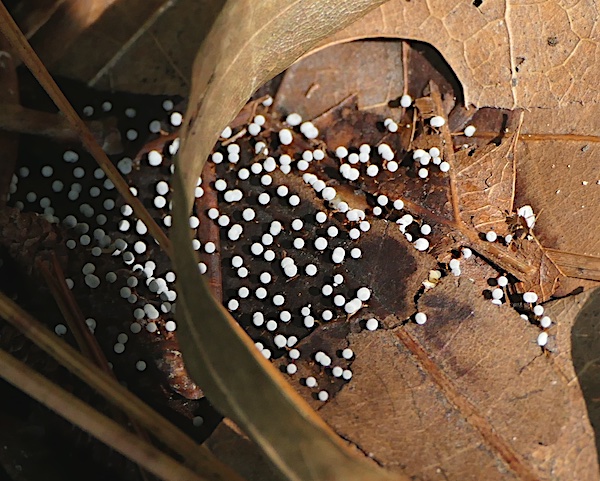
A closer look, after taking photos of the mass, revealed that each tiny, gray, round blob was at the end of a stalk attached to a leaf, pine needle or some other substrate. It did indeed look like a mass of tiny fungi. However, our Lead Conservatory Specialist, Richard Stickney suggested it might be a slime mold. I believe he’s right.
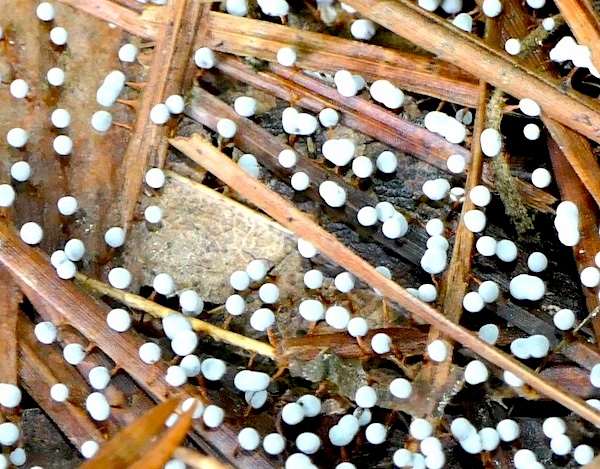
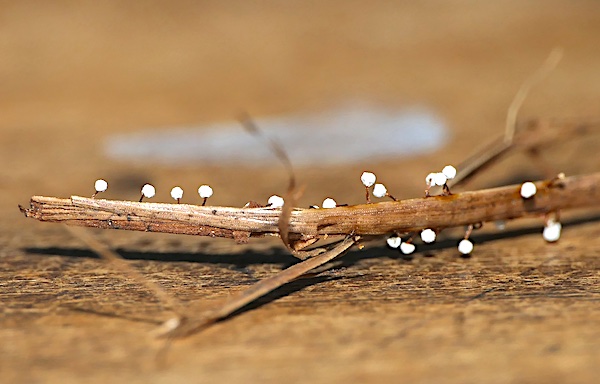
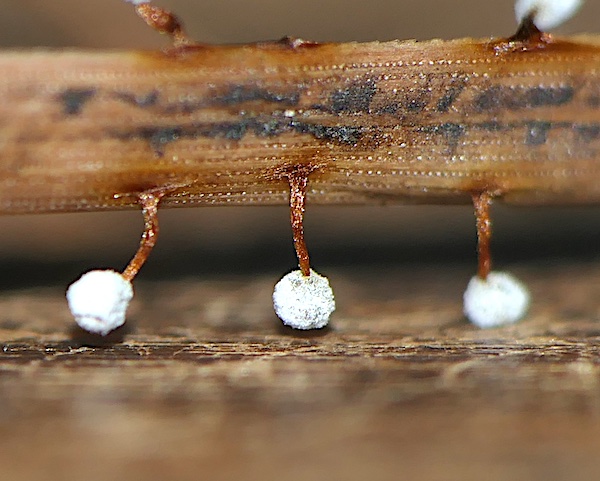
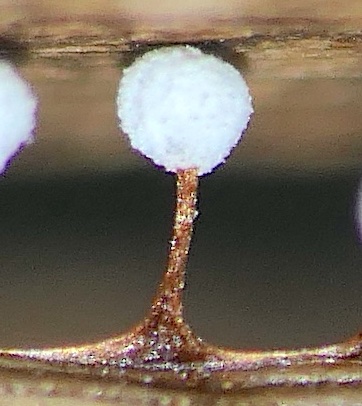
As I looked deeper, the more it appeared to be slime mold, or at least the fruiting body of some type of slime mold. Like a mushroom, slime mold puts forth the equivalent of a flower in the plant kingdom, from which spores are released or ejected into the air to spread across the landscape. Under favorable conditions the spores germinate into motile cells and form an amoeba like structure fusing together into what is called a plasmodium. The feeding and mobile stage of the creature, plasmodium, creeps and pulses across the land, the mulch, the rotting wood and the leaf litter.
What we see here is the fruiting stage. Some of these are broken open and you can see the spores inside.
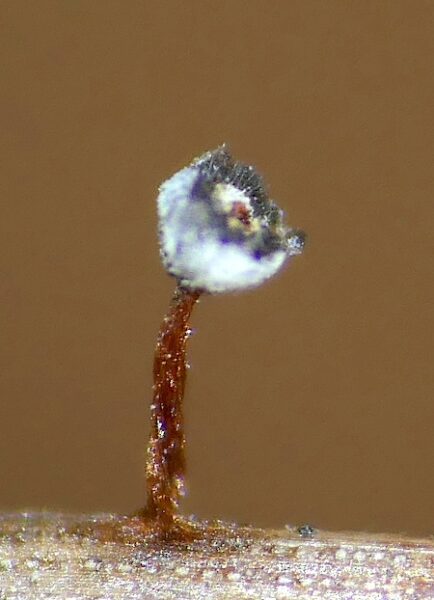
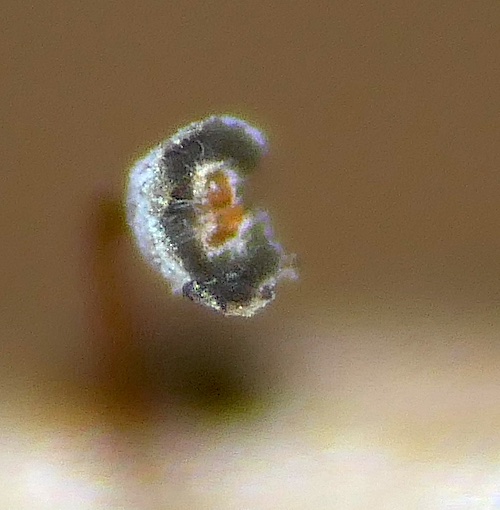
As far as the specific identification of the mold, I’m not sure, only that it’s the “fruiting body” (sorocarp?) of some sort of slime mold. If any of you out there can identify this to the species level, or even genus level, please comment below or contact me here: greg.dodge@lifeandscience.org.
You can never know it all. But you can sure have fun trying.